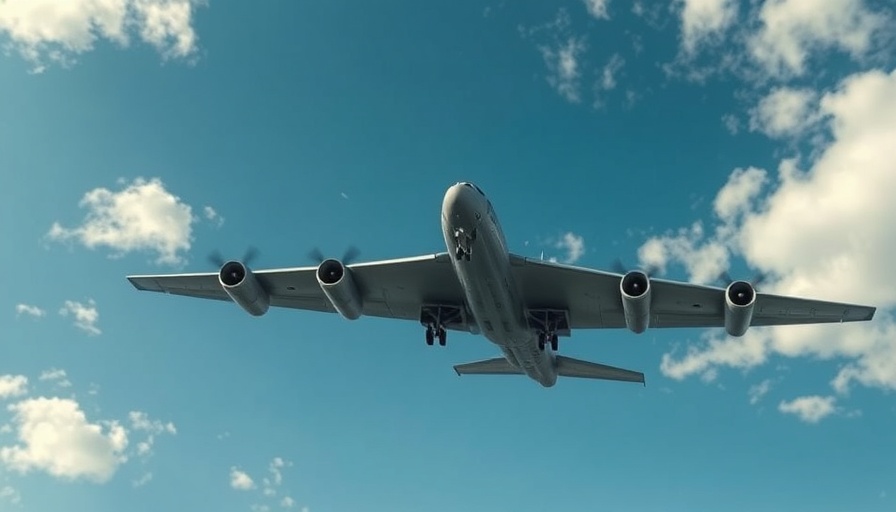
Understanding the B-52's Remarkable Landing Gear
The Boeing B-52 Stratofortress, affectionately known as the BUFF (Big Ugly Fat Fella), is more than just a towering icon of aviation; it's a marvel of engineering. Built to withstand strong crosswinds, the B-52’s innovative landing gear allows it to land effectively despite challenging conditions. During recent demonstrations, like the one at RAF Fairford on July 16, 2023, spectators witnessed this aircraft's unique 'crab walk' technique, showcasing its ability to land at an angle while maintaining control.
The Mechanics Behind the Crab Walk
This ability is made possible by the B-52's swiveling landing gear, which can be adjusted up to 20 degrees to counteract the effects of wind. With a narrow wheelbase and a large tail, this feature is essential for safe landings in heavy crosswinds, preventing dangerous wingtip strikes that could occur without proper alignment. The crew inputs the desired heading of the runway and monitors the aircraft's position, ensuring it remains stable even when tilted sideways.
Real-World Implications and Challenges
While the B-52 excels in versatility, its design presents unique challenges. The aircraft’s rudder authority is relatively poor, making the swiveling landing gear not just convenient but essential. Pilots must skillfully manage thrust and steering to navigate landing safely. Moreover, crosswind landings can wreak havoc on airfield infrastructure, as demonstrated by the recent damage to runway lights during a landing performance.
Community Interest in Aviation Engineering
The B-52's engineering not only captures the attention of aviation enthusiasts but also sparks important conversations within the community about the implications of aircraft designs on local airfields and industries. Understanding how such aircraft operate can foster greater appreciation for aviation mechanics and the professionals who work diligently to ensure safety during flight.
Impressions from the Ground: A Community Perspective
Witnessing events like the Royal International Air Tattoo inspires local communities to engage with aviation, whether through education or simply as spectators. The excitement of seeing a B-52 in action provides an opportunity for individuals of all ages to learn about aerodynamics, engineering, and the history of military aviation. Such events can strengthen community ties and promote interest in science and technology fields.
Conclusion: The Importance of Innovation in Aviation
The landing capabilities of the B-52 illustrate how engineering innovations can dramatically enhance the safety and performance of aircraft. As we observe the intersection of technology and flight, community members should appreciate the complexity behind each flight experience. The B-52 is not just an aircraft; it is a symbol of American ingenuity and engineering prowess, continuously fascinating those who witness it in action.
 Add Row
Add Row  Add
Add 




Write A Comment